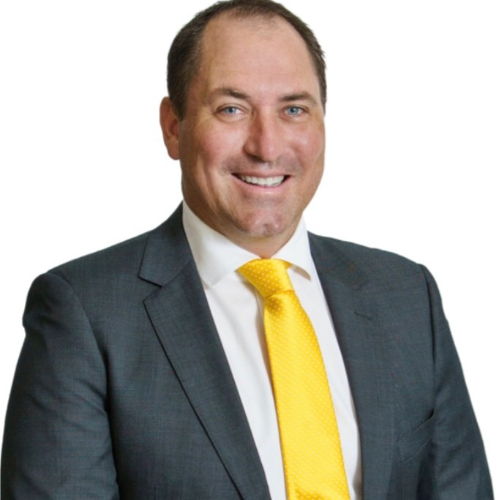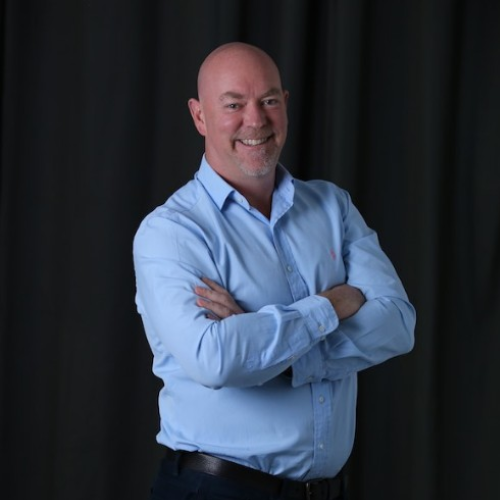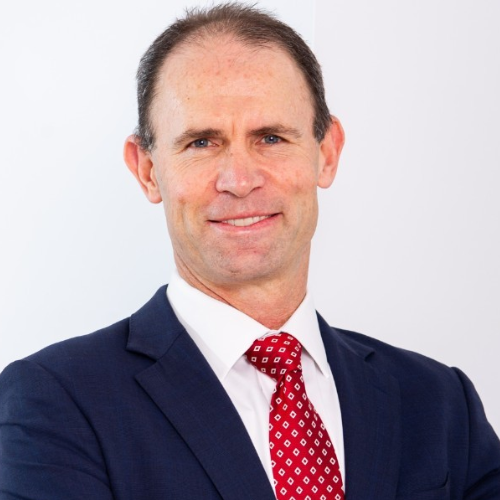Smiley Toohey is one of cricket’s most passionate and engaging fans.
He is a player, a coach and a wonderful ambassador for the game.
Smiley spent most of his playing days in the Western regions of NSW and represented Western Zone in the NSW Country Cricket Championships. As a coach he loves nothing more than to see people enjoy the game, have fun and fulfil their dreams and aspirations
Let’s find out more about Smiley’s journey in the game
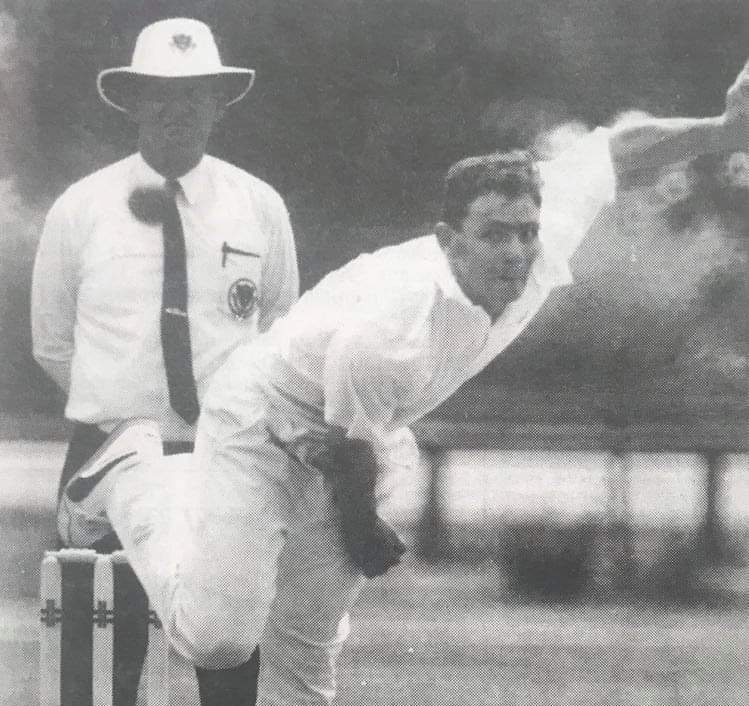
What year you were born?
1971 – Sydney Children’s Hospital, but we were living in Gwabegar (in the Pilliga scrub) at the time, Dad was the local policemen.
Can you remember your first game of cricket?
In Wellington in 1980, Under 12’s on Pioneer 3, playing for the Dragons. We got a smashing to remember. Didn’t score any runs, wicketkeeper for most of their innings. At the end of the game the coaches were giving everyone a bowl. As a nine year old does, I threw the ball up on a length, the older batsman came down the wicket and smashed the catch straight back at me. Didn’t get a hand on it! Straight into the area that was only an over before protected by a box! I cried, especially when the umpy started pumping my legs.
After some scolding from my dad for what he thought was bad sportsmanship and crying because we lost, he eventually realised it might have been something else. When the doctor said to the nurse at Wellington Hospital, you need to come and have a look at this, you won’t see this very often, I knew I was in trouble. Then he mentioned stitches. Apparently, I sat bolt upright and screamed NO!
Incidentally, this was my only season of cricket playing with my sister Denise (12) and brother Kevin (7) in the same team, so great memories.
Tell us briefly about your cricketing journey?
Played my junior cricket in Wellington, started playing senior cricket for Anglicans from about 13. Having relocated to Bathurst in 1987, I joined Bathurst Centennials and played there until 1998. Played for Yeoval in the Wellington comp, then back to Bathurst in 2001 for Centennials. My last season playing was in 2003/04, playing for City Colts as Centennials withdrew from the Orange Bathurst competition, and there was a lot of clubs not wanting to travel to Orange.
At school I played for Western Region CHS and NSWCHS 2nds. When I was at CSU, I played for Western Districts Cricket Council, Western Zone at Colts and Open level for about 4 years, then Macquarie Valley and Mitchell Cricket Councils for one year each when I was at Yeoval.
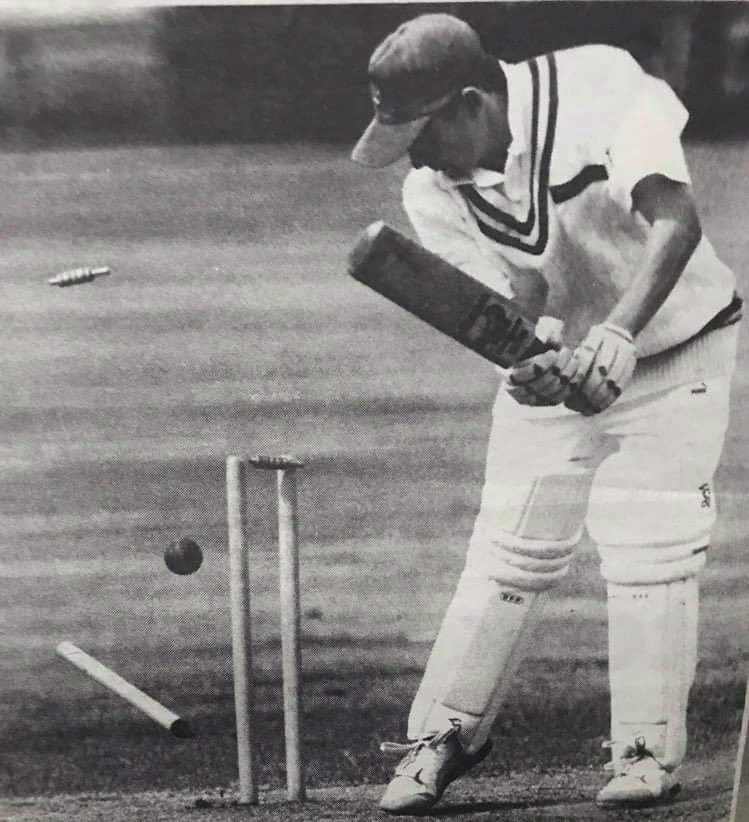
Smiley Toohey unfortunately dismissed
In which grade and at what age did you make your debut in senior cricket?
I was 15 years old. When we first moved to Bathurst, I met brothers Stephen and Kevin Geyer, who played for Centennials Cricket Club. Dad told me that I would probably play thirds and should be happy with that. Working hard might get me promoted.
Cricket is a game of lucky breaks. When I turned up to our first training session, half the first -grade team had gone to another club. Captain Graeme Clark watched me bowl a couple of balls and then told me I would be playing firsts on the weekend. I spent a lot of time with Graeme, who provided me with the cornerstone of some of my cricketing philosophies – (club) training is important to make everyone feel part of the team, work with everyone and give positive feedback. These mantras helped our team move from expected easy beats to playing finals cricket.
What was the highest grade you played and can you remember what you were feeling when you were selected and how did you perform on debut?
Playing for Western Zone in the NSW Country competitions was the highest level I reached as a player.
Our team had some great games like scoring 350 to beat Central North one day, only for Newcastle to bowl us out for 45 the next!
Our team did end up playing in the 1995 NSW Country Cup final against Newcastle at Pioneer Oval in Wellington. I bowled pretty well on the day, getting Mark Curry caught behind and I even made Greg Arms play and miss a few times! During that time there was also Country Cup games played between towns with state players.
One of my highlights was playing in a Resch Cup game against Orange at Wade Park. I opened the bowling with Brad McNamara and knocked Trevor Bayliss over for a duck. Had him dropped at second slip and caught at first slip the next ball. Trevor would call me to go and play grade cricket for Penrith, but I was never really interested. Lovely to be asked. He must have thought who is this guy who wants to stay in Bathurst and play with his mates? I also played in a Centenary Game against the NSW Sheffield Shield team in 1996. Corey Richards kept hitting me for six any time he could free his arms. It was a great experience and something I’m very proud off. I went for 37 of 5 overs and had been hit for 5 sixes.
I was very excited to be given these opportunities, and although Western Zone is a big region all the players and officials know he each other pretty well from the different competitions we played in as juniors. You were always playing with friends. Our Zone always had outstanding officials and they created competitions and coaching opportunities for us, even before CNSW started their programs. Brian Gainsford, Carl Sharpe when I first started, Brian Cox, Colin Wood and Stephen Poole in the years after. They were all supported by great committees.

Trevor Bayliss
If you can share with our audience, how would you describe yourself as a cricketer?
Like most players I evolved over time. I was a swing bowler who could be quick at times. I did not have the body to sustain pace bowling and unfortunately had back injuries, which eventually led to groin and hamstring injuries. My last season I also bowled off spin. I always took my batting seriously and in Bathurst cricket I batted anywhere from opening to number 11, sometimes even in the same game!
What were your strengths as a player?
I was competitive and always wanted to be part of the game. When I was bowling well, I could swing a four piece cricket ball, but when the ball wasn’t moving around, I just wasn’t consistently fast enough. As a batsman, you generally needed to get me out. I wasn’t going to give the bowler my wicket. But I was good at reading the game and knew what needed to happen at most points in play.
What was your highest score in senior cricket?
In 1989, I made 129 against Blayney for Centennials in a minor semi -final in Bathurst first grade. I actually walked in the 70’s and got called back by Adrian Prosper, the Blayney captain. He wasn’t sure the edge had carried. I made 70 the next week on a wet wicket against St.Pats, with Geoff Byrom (father of Paul) and Darren Gold bowling rockets. That was my best ever innings.
What were your best bowling figures in senior cricket?
In my last season of cricket in Bathurst, I took 6 for 30 against Orange City for City Colts. I had taken 6 for 80 a few weeks earlier against ORC Cricket Club, which was my first time bowling off spin. If I could have my time over in cricket, I would’ve bowled off spin from the start!
Who were the best three fast bowlers you have played against?
Having played pretty much all my cricket in Western, I’m going to stick to players from my area.
We had some really good quick bowlers, Andrew Zell (he’d be my fourth) mentioned just about everyone in his interview. But the quickest bowler I ever faced was Kent French, bowling in swinging yorkers. I once went in against him on a hat trick at Bathurst Sportsground, I was saying to myself - no back lift, no back lift. He bowled it and it went straight threw me, missed the stumps and went for 4 byes. I ran down the other end and the Umpire Stewart Greenhalgh said to me if that had hit you on the pads, I’d have given you out LBW. I responded, if that had hit me on the pads I’d have run off!
Justin Langer once described him as the fastest white bowler he ever faced after playing against Kent (ACT Comets) on the WACA in a day night game.
I played with Chris Tremain as an11 year old for Yeoval, he didn’t bowl much for us, and he was our professional 12th man. But I coached Chris and against Chris when he was young, depending on which competition it was. A future Sheffield Shield Player of the Year and multiple Sheffield Shield winner with NSW and Victoria. He represented both the Thunder and Renegades in the BBL. Chris grew into his action and length, and some great adjustments by Geoff Lawson to his action had him swinging the ball at top pace. I am expecting him to have a bumper year if he gets on the pitch for NSW this season.

Chris Tremain
I could put a lot of guys in this third spot – Chris Killen, Andrew Grant, Don Nash, Tim Cox, Andrew Grant (Dubbo), Andrew Zell (Gilgandra), Andrew Mutton (Grenfell), Joel Murphy, Andrew Lamb, Geoff Byrom, Paul Byrom, Darren Gold, Peter Francis, Jack Holman, Greg Griffiths (Bathurst), Steve Iffland, Steve Hooper, David Langford-Smith, Michael Coote (Orange) and Craig Howard (Oberon). I did also play juniors against Glen McGrath (Narromine) but he didn’t get to bowl much!
But I’m giving the third spot to Michael Hillier from Orange Cavaliers. He was big, strong and fast. He hit me in the head with a bouncer when I opened in my first inter district game against Orange. Michael and Steve Iffland were a great pair of bowlers, real pressure when they bowled in tandem. Michael unfortunately died in a car accident when we were in our early 20’s. Champion guy.
Who were the best three spinners you have played against?
Ashley Knight (Gulgong / Mudgee). Ashley was a leg spinner with massive hands. Great control and as strong as an ox from his work as a bricklayer with his Dad Chris, and competitive. I never met a bloke who loved cricket as much as he did. He was selected in the NSW Country Open team as a 19 year old. Unfortunately, he died driving to a cricket game in 1998. He was staying at my house that night and never arrived! It is a big call, but I honestly believe he was the leggie born to replace Warnie and MacGill.
Denis Ferson (Blayney). He was a left arm wrist spinner. I played against him when he was near retiring, but I thought he was a wonderful bowler. I’m sure he thought he was going to get me out every ball. Had a brilliant wrong ‘un. Denis played for NSW Country as a young man, I believe. Great control, and lucky for us was a little slower through the air when he got older, giving us a chance.
Graeme Clarke (Bathurst). Graeme started as a swing bowler but reverted to LA orthodox as he got older. I would hate to estimate how many wickets he took, but I played years with him at club cricket (against him in district games) and reckon he took an incredible amount in local cricket. When I started coaching, we convinced him to play inter council cricket as a spinner one year (he’d played for Western Zone as a pace bowler when he was younger). If he had started bowling spin when he was 20, he could’ve been anything. Obviously with his pace bowling background, he had a brilliant arm ball.
I have got to say I did play games with and against Greg Matthews and he was really keen to share with me what he was doing and why. I got a lot out of that which helped with my coaching, along with Murray Bennett giving me a few tips. When coaching a Western Zone U/16 team, the captain was Brendan Lyon, his little brother Nathan use to tag along to the trainings, and I’d get him to come in and bowl in the nets - just a little name drop. Brendan was a handy junior leggie.
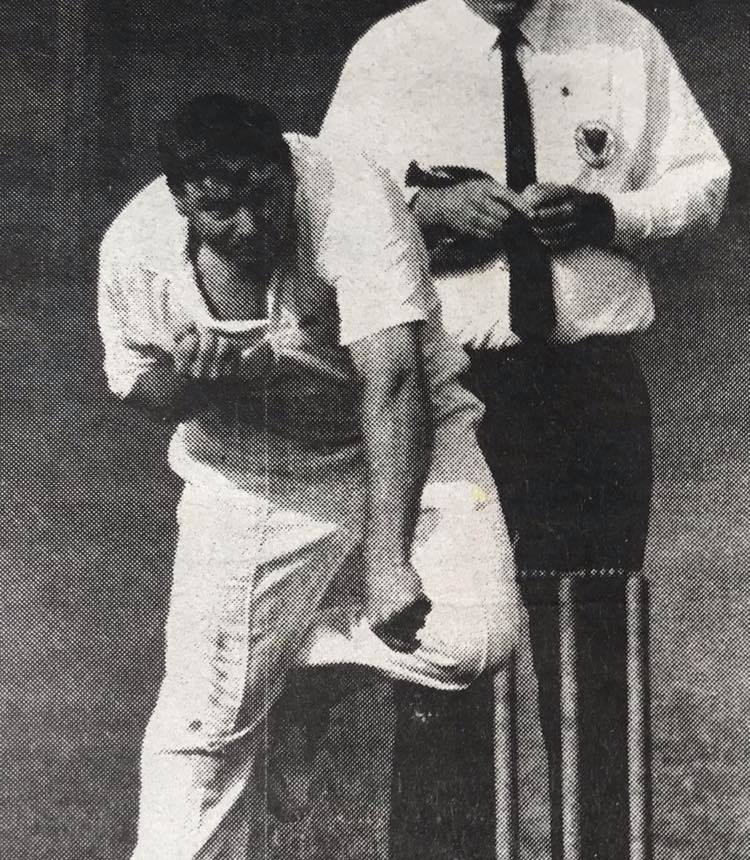
Graeme Clarke
Who were the best 3 batsman you’ve played against?
Again, I’ll stick with Western Zone players.
Paul Toole – Paul was the initial captain of the merged Randwick / Petersham club in Sydney, but he played in Bathurst until he finished school. Paul made all the rep teams as a younger player. He played inter-district cricket for Bathurst as a 15 year old and was soon in the various Western District and Western Zone teams. He could dominate any attack on his day. Having played with and against him, I witnessed him play some incredible innings. My favourite two being an unbeaten hundred at a NSWCHS Championship game on a really ordinary damp track to get our team into the final. And in a match against Otago Colts in Alexandria, he and Kevin Geyer put on about 250 to chase down 385 on the last day of a three day game for a win.
Kevin Geyer – Kevin played at Penrith and Randwick. He was a quality cricketer with bat and ball. Similar to Paul, he just loved to hit the ball hard and played some incredible innings all over our area and in NSW Country. It was great to see him make the NSW Shield team, but as always, he is very humble about what he achieved in cricket. Kevin was able to win a player of the match award for NSW in a game at the SCG, and I tell you we were all pumped watching him that day. Kevin’s brother Stephen was also a joy to watch when he was hitting them big!
Kirk Yates – My favourite opposition batsmen during my time in Bathurst. He once scored a hundred in an hour against us, it was just incredible. Kirk played at Penrith and Campbelltown, but I think if you ask any cricketer from Bathurst in the 80’s and 90’s, they’ll tell you he was just brilliant. Kirk was on the top of any list of batsmen you wanted to get out. Clarky use to put a point score on the wicket of each batsmen 1 – 11, Kirk was often worth 20 points (along with Bob Davis from Rugby Union).
Others who frequently enjoyed me bowling to them included Gav McDonald, Frank Weymouth, Craig Evers, Trent Colley, Steve Bray, Stuart Middleton, Stu Milne (Orange), Bob Davis, Bruce Webb, Brian Wood, Scott Howard, Brad Mollenkamp, Steve Geyer (Bathurst), John Colwell, Kelvin McMillan, Corey Martin, David Taylor (Dubbo), Nic Berry (Cowra) and Porky Dillon (Darling).
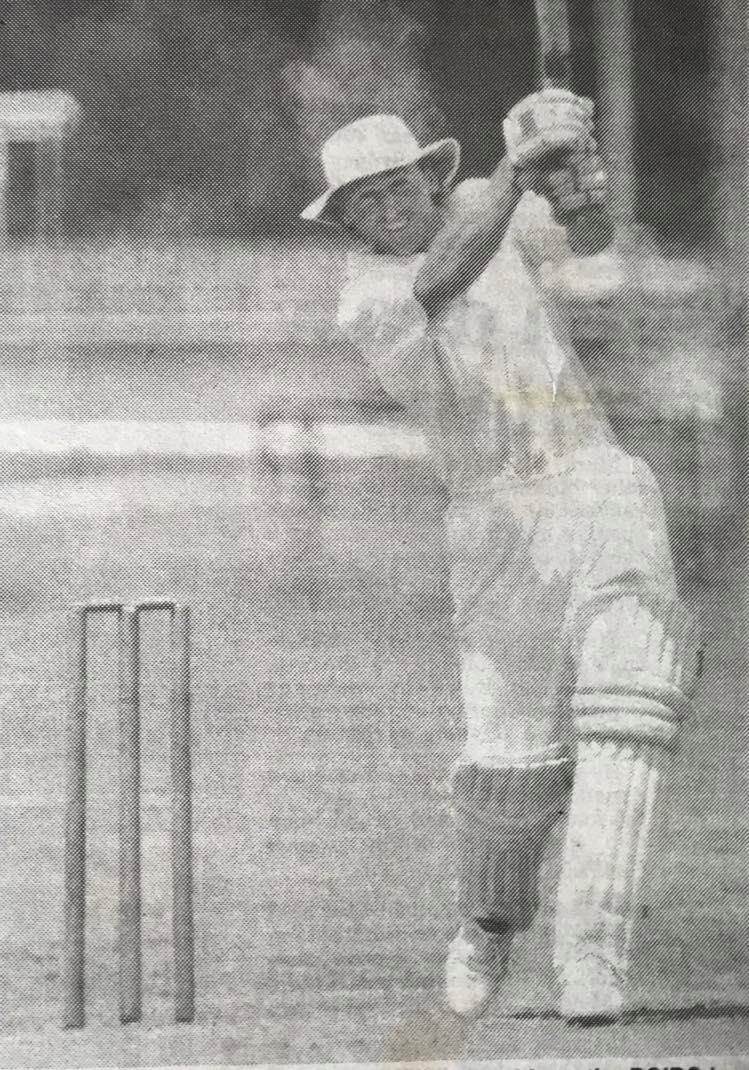
Kirk Yates
Who played the best innings you’ve seen firsthand playing with or against?
Wayne Comerford was a leading batsman in Bathurst for many of the years I played there. He had played at Penrith and returned to play for Centennials. St.Pats had started a sporting club out at Kelso and hosted first grade games there for a year. The wicket was incredibly bowler friendly and wasn’t really first grade standard. The only game we played there, Babe got 171 (out of 260). No other player in either team got above 30. He hit the ball to all parts of the ground against a quality bowling attack. I’m thinking it was around 1992. He had at that stage played in England and was in the form of his life with 18 months of continual cricket. He scored close to a 1000 runs that season. Only Asif Din had done better in my time in Bathurst.
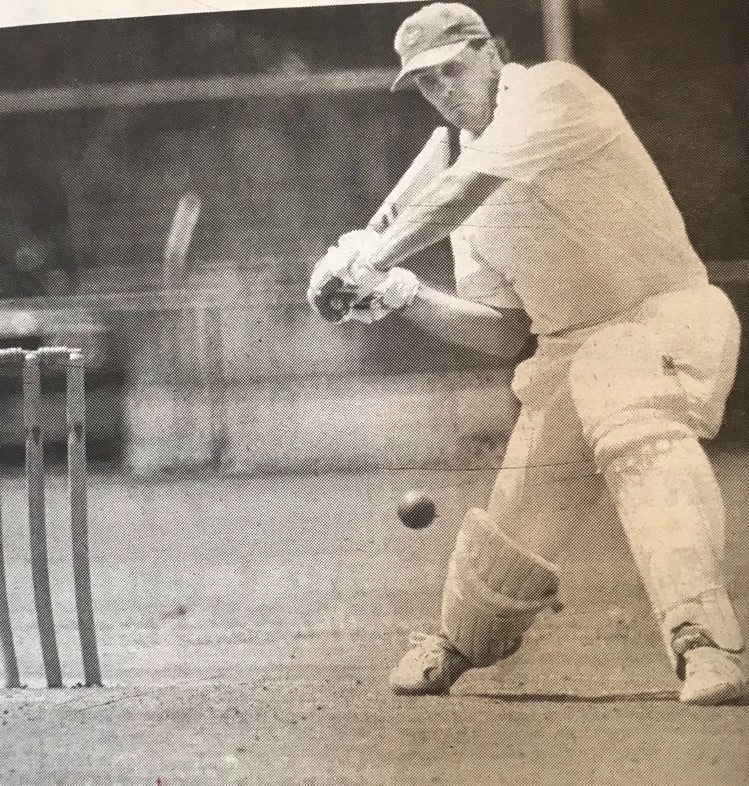
Wayne Comerford
Was there any bowler/batsman in particular who for whatever reason seemed to always cause you a few problems?
I had trouble with lots of guys, but Craig Evers from Orange Cavaliers would be the one in club matches. Craig played every game like it was a T20, see ball – hit ball to boundary. I just seemed to bowl into his swinging arc. He would even get me out bowling the dodgiest off spinners (generally caught on the boundary).
Can you recall a time when you thought, wow, this is a step or two up from what you were used to?
Playing against state players in games gives you a really good indication of your place in the cricket world. To be a player at that level demonstrates considerable skill and expertise. Cricket is a game where every dog can have its day, and I certainly had the opportunity to experience those moments, but it was if you could do it over an extended period of play which sets them apart. Those cricketers were just incredible. But in general, I really loved the way they shared their passion and made us feel part of the game. Those interactions I feel have been lost a little in this new ultra-professional era.
From playing a team, the Newcastle team of the early 90’s would have to be the one of the best teams to have ever played at that level. Greg Geise, Greg Arms, Mark Curry, Peter March, Phil Stanbridge, Paul Dyson et al – these guys were basically the NSW Country team for years. They basically had former state players, 2nd XI players and what would have been good Sydney first graders in their team. Very dominant and professional for country cricket.
Who was the best wicket keeper you’ve seen firsthand playing with or against?
In my first school game for Bathurst High, Greg Reid was the wicketkeeper. He kept wickets for pretty much every team I played for as an adult from Centennials through to Western Zone. Greg had the best pair of hands and was agile with insane reflexes. Greg also captained our club to a few premierships. He played first grade Rugby League for St.Patricks in Group 10 and first grade Rugby Union for Bathurst Bulldogs in Central West. He was one of the most talented sportsmen in our community. Zelly mentioned a catch he took in Griffith once playing for Western Zone, it was amazing and did set us on our way to winning the game and carnival. But I saw catches like that every season for about ten years. He was also very good up to the stumps to spinners. His favourite quote – gee I’m going to miss you blokes throwing balls at my feet over winter! Reidy once saved my life at first slip when Kent French sent down an absolute thunderbolt out of nowhere, a wide half volley that the batsmen threw the house at, I was about 4 metres too close at slip and it was coming straight at me. A full length dive straight into Reidy right hand mitt, he had dived back at a 45 degree angle to catch it!
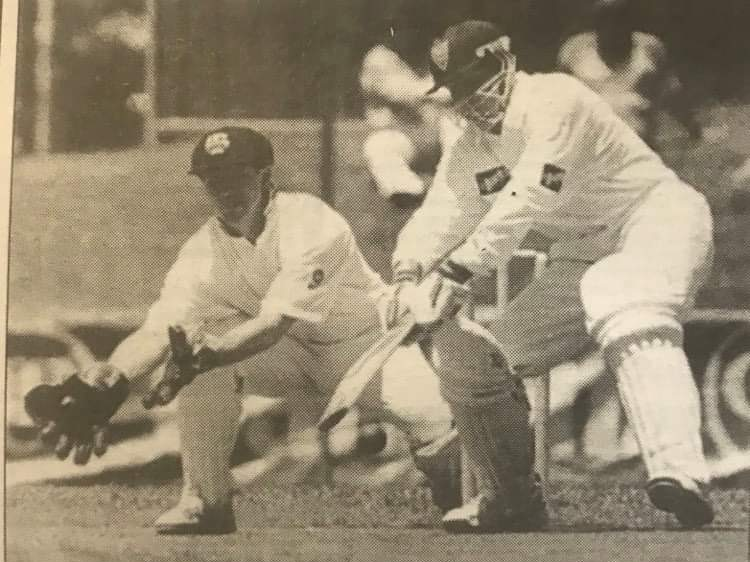
Greg Reid wicket keeping with former NSW first class player Kevin Roberts batting
Who are the two players you admired most in terms of skills and competitive spirit in the competitions you played?
I played NSWCHS Championships against Adam Gilchrist. Even as a schoolboy he was special to watch and just be around. He was a friendly guy and we also played soccer against each other at NSWCHS. He won the Player of the NSWCHS Cricket Championship twice, and he always scored runs when he needed to. He hit me for 6 first ball of the NSWCHS final in 1989. My dad watched him play in a game at the NSW Schoolboys week, and he asked me who he was before replying with what might’ve even been the greatest understatement ever - “Gee he is a lot better than everyone else here!!”
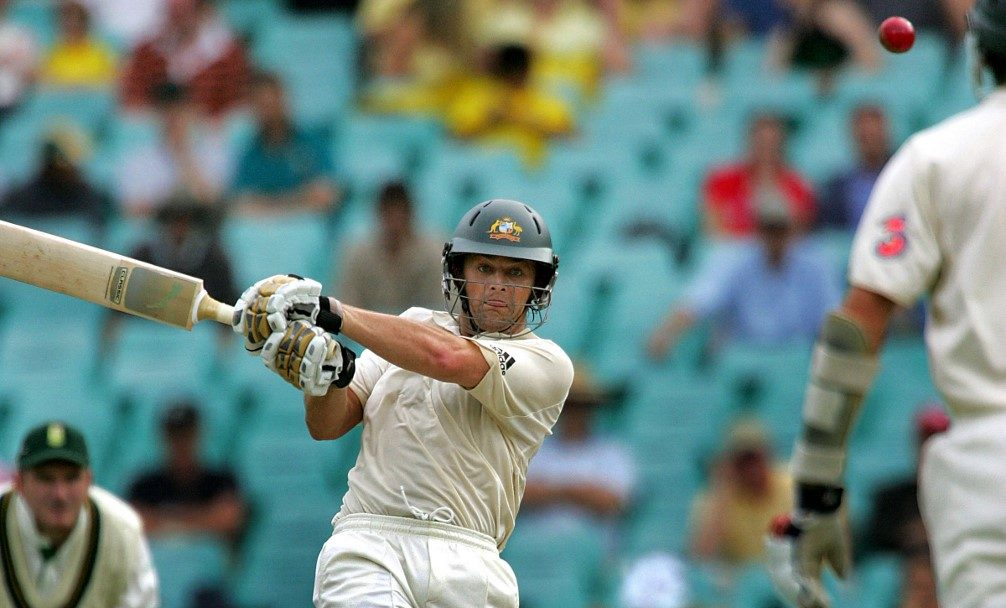
Adam Gilchrist
The other I would have to say would be Kevin Geyer. I actually coached Kevin as an Under 14 player and batted with him in his first game in first grade for Centennials. I also captained him for Western schools when he first made NSWCHS as a 16 year old. I watched him score a hundred at his first Open NSW Country Carnival and gain selection in the NSW Country team. Kevin was a great cricketer; he dominated his last few years in Bathurst and just got better and better each year. Staying in Bathurst to play during his first few years of university really helped him develop. It was no surprise that he made it to the Sheffield Shield and one day competition with NSW. I think if he played in another state, he would have ended up playing a lot of first-class cricket. In his last game for Centennials, Centennials had every grade make the Grand Final. In a slight complication for the day, his brother Steve and Wayne Comerford got married leading up to the game. My sister also got married that day, so we had three players out. I arrived back in Bathurst the night before to find out the club had decided to keep players in their grades and first grade were playing a player short. So I effectively opened the bowling for 7 overs and walked off to go to my sister’s wedding. The team fielded with ten. Kevin took 5 wickets bowling leg spin, then made an unbeaten hundred to win us the premiership against St.Pats. There was huge pressure on him in this game and it did not surprise me that he handled what was about to come at him in grade cricket in Sydney.
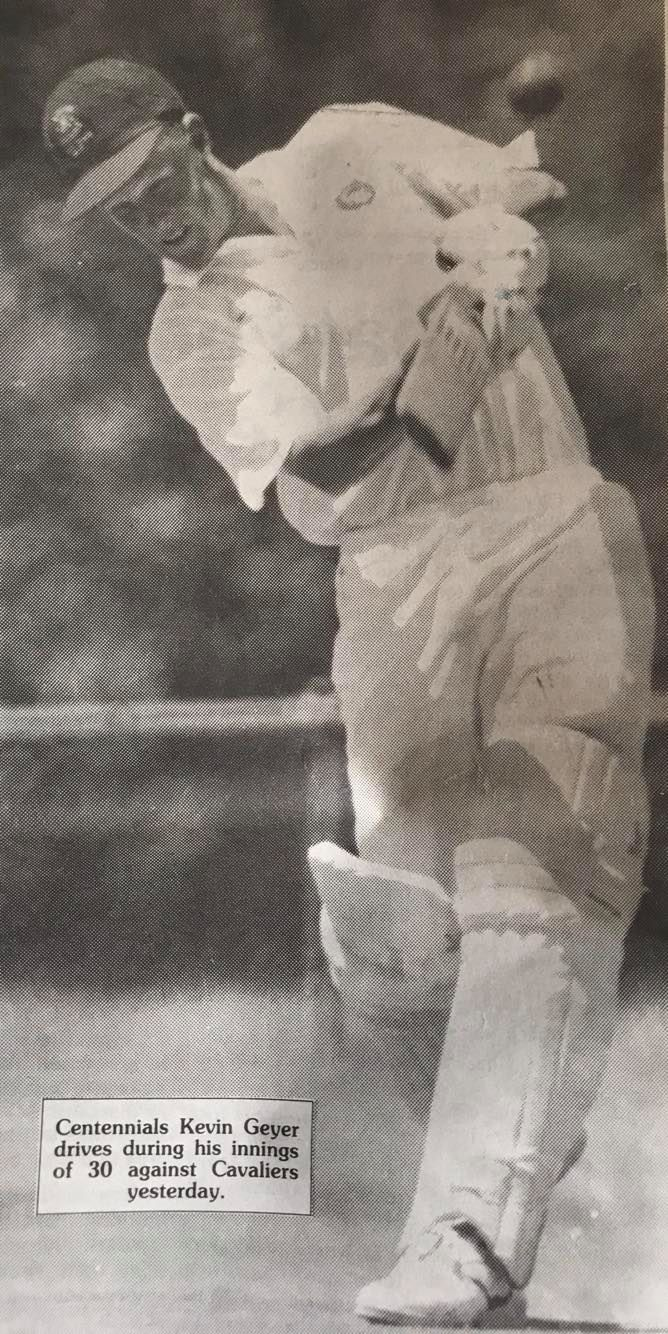
Kevin Geyer
Who was the best captain you had the good fortune to play with?
John Colwell captained our Western Zone team for a few years. John was a great attacking batsman and led from the front. He had a really smart cricket brain. I always felt he set great fields and communicated well with bowlers. John had the ability of making you feel confident that you could get it done. As a person he had the respect of his team at all times. He dominated Dubbo cricket for many years. Expect big things if he ever plays over 50’s cricket. He also bowls offies!
Who has been your funniest team-mate?
This guy has been mentioned before in stump to stump but Dave Dillon is incredibly quick witted and use to say some funny sledges to batsmen. But my funniest moment with him was opening the batting in a Grand Final in 1993. The game was over two days. Our team bowled St.Pats out for about 120 (they made 450 against us in the major semi) and Dillo and I survived until stumps on the first night. There was a big 21st that evening and Dillo hit the piss hard. The next morning a ball hit his thigh pad and I called him through for a single to fine leg. He took off like he was in the Olympic 100 metre final only for his legs to give way about mid pitch. I screamed your end for the throw and turned around to watch him crawling up the wicket like a soldier crawling under barb wire to make his crease. He kept crawling past the stumps, and then vomited this black tar substance on the edge of the pitch. We were all gagging! He just stood up and smiled. Dillo could also put about $1 worth of 5 cent pieces up his nose! A really good bloke and cricketer.
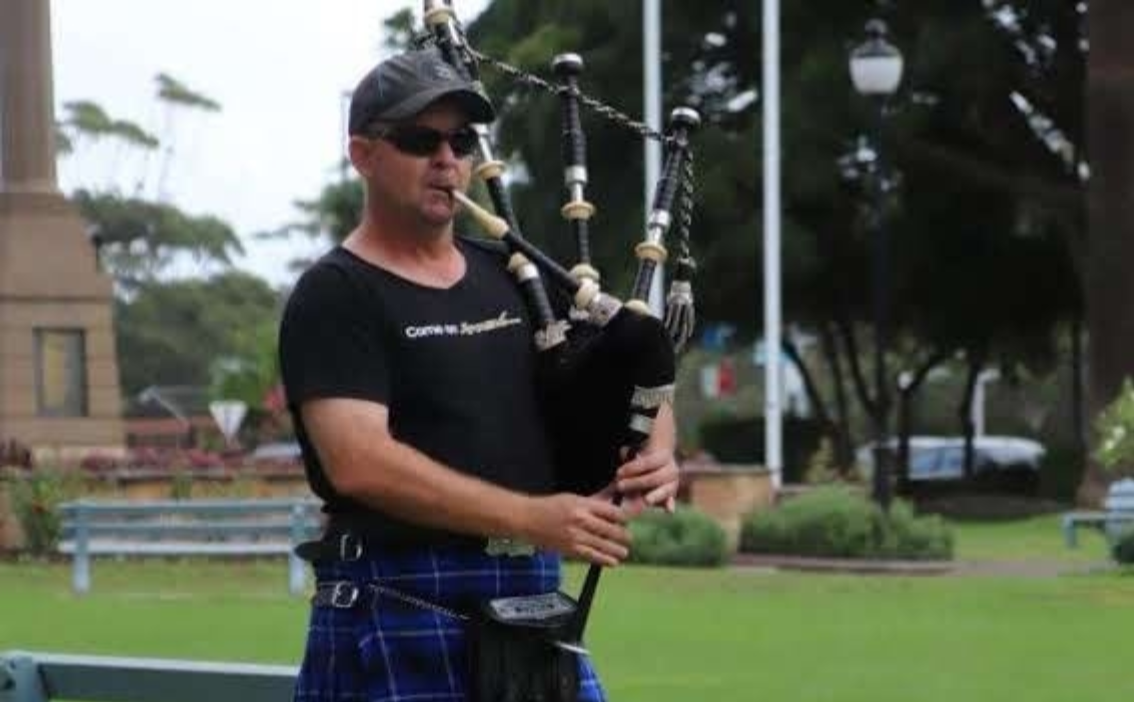
David Dillon playing the bagpipes
Can you recall some banter or an exchange on the cricket field that still makes you laugh today?
Bathurst cricket in the 80’s had some brilliant exchanges. I never got sledged too much, but Jack Holman (St. Pats) was bowling to me one day and he had bowled a whole over where I blocked every ball straight back to him. I could see he was getting increasingly more frustrated after each ball. At the end of the over he said, “f—k Damian is that the only shot you’ve got?” to which I replied, “Well Mr Holman, is that the only delivery you can bowl?”. His team-mates were laughing and taking the piss out of him because I called him Mr Holman. I really respected that team. They played hard and always encouraged me. Jack had played plenty of games against international touring teams as a young quick in NSW Country.
You’ve been involved in cricket coaching in regional areas and school cricket in NSW for many years. What do you love most about cricket coaching?
I remember my first year out of junior cricket, I coached an under 14 team. It is what I had seen growing up, the senior guys did the coaching. And when I went to university, I had the opportunity to attend a number of coaching courses in a range of sports, but cricket and rugby union were always my favourite sports. After attending the Level 1 at Burrendong Sport and Rec camp, Carl Sharpe got me involved coaching junior and senior rep cricket. I had been coached by David Martin and Stuart Webster (Dubbo), Col Wood, Greg Griffiths and Ian Paxton (Bathurst) and Bob Craine, Neville Castle and Graham Mackie (school cricket) so I had experienced some quality cricket people during my playing days. These coaches demonstrated to me that you put back into the game through coaching or managing.
My first representative team was with Western Region School Sport in 1996. Through the NSWCHS Cricket, I met John Dyson and being the youngest coach, John kept an eye on me and how I was working with players. Carl Sharpe got me involved in coaching the Mitchell Colts and Open Age teams at roughly the same time, and before I knew it, more opportunities were opening up. These teams all coincided with a very talented group of players coming through our zone and we were having a lot of success in various competitions. Working alongside Steve Chippendale, Greg Griffiths and Alan Mann, we managed to make a few finals at Bradman Cup. Success is great, but I was learning from many experienced coaches with a wide range of skills and I was asking a lot of questions.
Then in 1999, John Dyson asked me to apply for the coaching position for the NSWCHS tour to South Africa. Working with a squad at the SCG indoor training centre and then taking them away for three weeks was the learning experience of my coaching life. I had John sitting on my shoulder critiquing every bit of advice I gave and reading the game. This was better than any coaching course I had ever attended and we had some really impressive performances against provincial colts teams. Some of the coaches from the opposition were ex-test and first class players and loved to talk cricket. Many of the players were country based and they loved every bit of what we were doing. I followed this up with trips to the UK in 2001 and South Africa again in 2003. The last one had Trent Copeland tour as a wicketkeeper/batsmen! From these tours I had been able to coach the NSWCHS 1st XI and NSW Under 15 schools’ team, and eventually was given the honour of coaching the School Sport Australia team for three tours – India (2004), Darwin (2006) and England (2007). These trips were all amazing and I got to see a young Virat Kohli take on Phillip Hughes in India, Josh Hazlewood, Mitchell Marsh, Kane Richardson dominate in Darwin, while we took on a young Joe Root and Ben Stokes in England. After this I had a few years organsing teams before going back to coach the NSW 15’s Schools team in 2012-2014. These were all great experiences and gave me a tremendous amount of satisfaction.
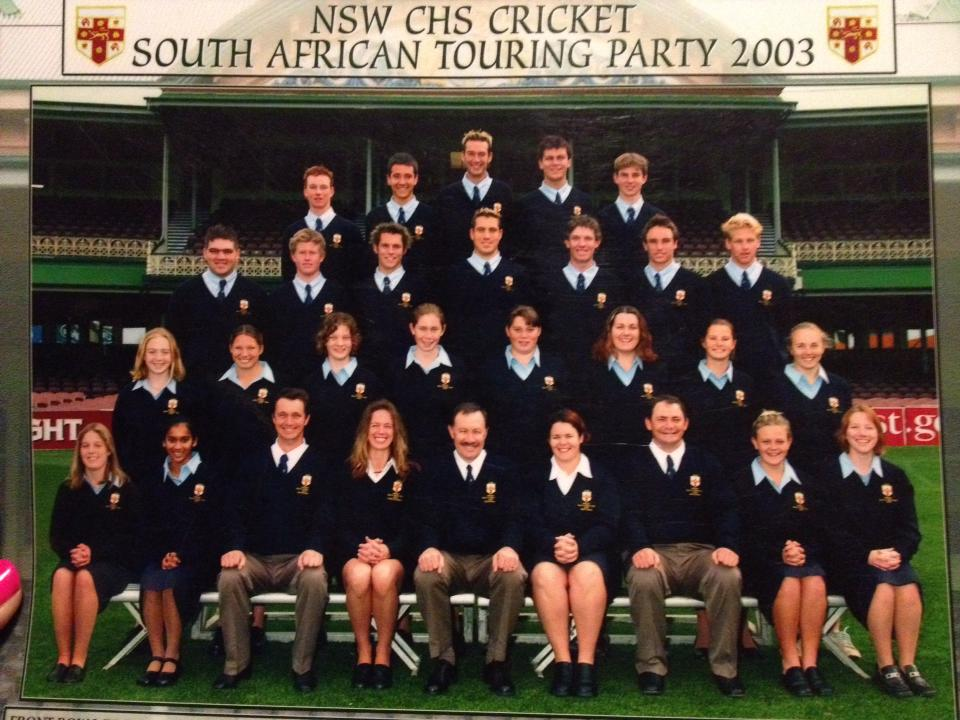
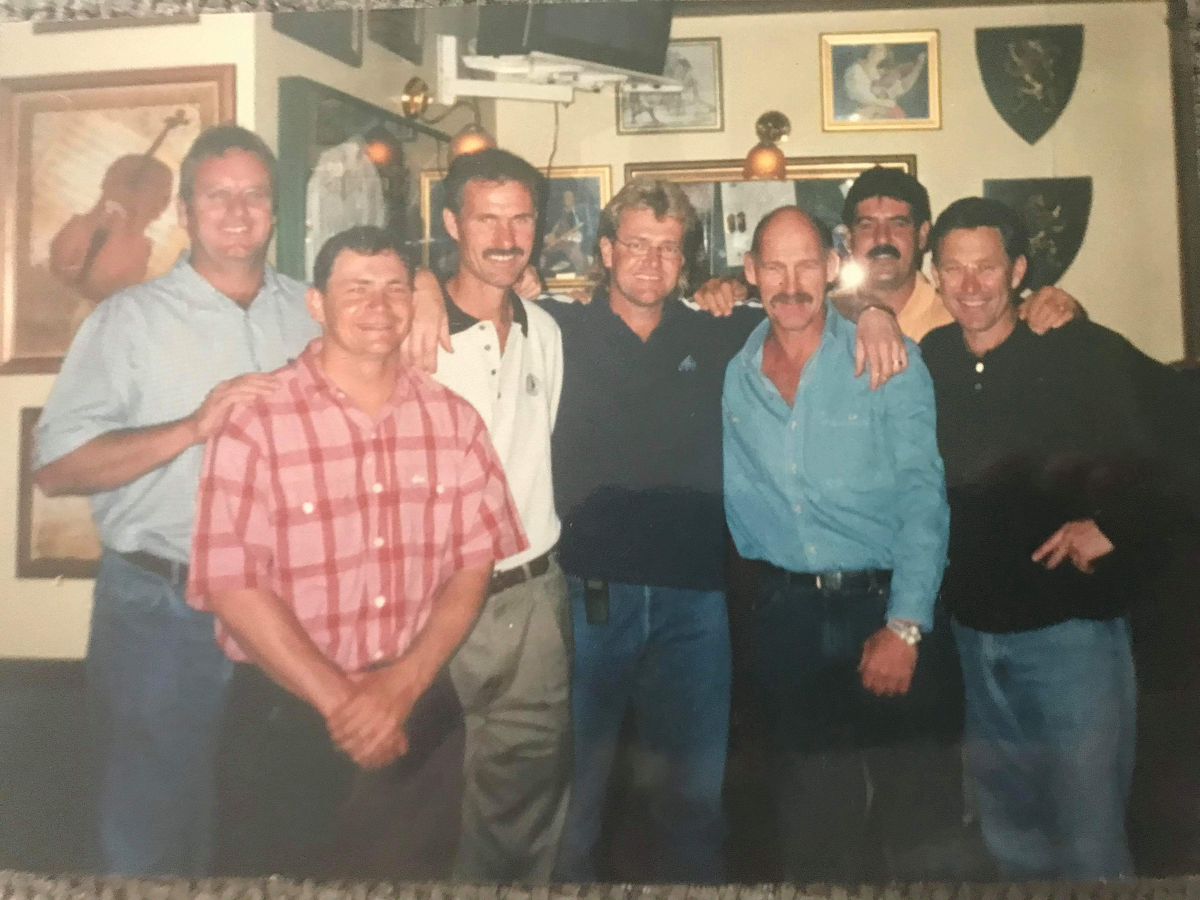
Left to right - Hugh Page (SA fast bowler), Smiley Toohey, Jimmy Cook (SA opening batsman), Mike Haysman (South Australia player, current commentator), Clive Rice (SA captain & all-rounder, now deceased), Anton Ferrera (SA all-rounder), John Dyson (Australian player)
What I loved was the opportunity to share my experiences in cricket, hopefully allowing players to reach their potential for that moment in time, and hopefully they look back and have enjoyed the experience and relationship I was able to build with them. There were moments when I got it wrong, but I tried really hard to learn from those mistakes and make sure I did better the next time. Hopefully I inspired others to give back to cricket and continue on their learning. Watching many of these young blokes achieve their dreams of playing professional cricket or just at the highest level they could was the best thing. It was a great way to spend your time and I met some lovely parents along the way as well, friendships I still have to this day.
Who are the players you’ve had the good fortune to coach and watch come through the regional areas and school competitions and gone onto enjoy successful cricket careers?
Firstly, I’d like to point out, when you coach a representative team, you are mostly game coaching and passing on advice / guidance when needed. Many of the players I will mention have been coached in their clubs, regions and states by many dedicated coaches. The School Sport Australia teams gave me the opportunity to work with players and selectors from all over Australia. I can’t name everyone, but some of the guys who went on to play for Australia included Phillip Hughes, Josh Hazlewood, Mitchell Marsh, Chris Tremain and Kane Richardson. Plenty managed to make first class and BBL level. I always found it interesting that some of the most dominant players in schoolboy teams couldn’t quite take it to the senior level. Adam Coyte for instance was an incredibly dominant player, captaining the SSA team in 2006 and he just owned games. Nathan Brain, who was a leggie, was unplayable as a 15 year old. He regularly kept Adam Zampa out of teams like NSW 15s and NSWCHS. Tom Beaton played one of the most incredible innings against NSW 15s in an SSA final on the WACA in 2006, facing a pace attack of Hazlewood, Tremain, Tim van der Guyten, Tim Armstrong and Adam Coyte. WA were 6/50 and Tom managed to make 98 not out. Insane innings in the circumstance of the game. Tom played first class cricket for WA and for the Renegades, but he looked like he could do anything at that age.
Western Zone produced a number of quality players when I was coaching there, with Trent Copeland, Chris Tremain, Tim Armstrong, Jono Dean leading the way, plenty of others made NSW 17’s and NSW Schools teams. If you’d told me that Chris and Trent were going to make first class hundreds I certainly would’ve been surprised (both have over 300 wickets in pro cricket), but the hitting power that Jono and Tim had made them very likely to play short form cricket professionally. I often get the question about Trent being a wicketkeeper and did we know he could bowl? I’m going to debunk the myth; he actually opened the bowling for Western Zone at Bradman Cup in a game. We knew he could bowl!
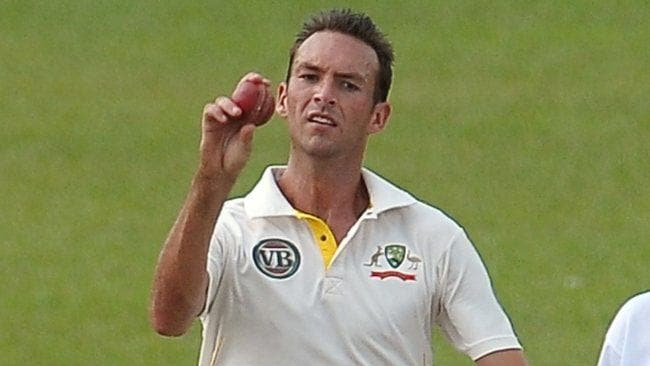
Trent Copeland
NSWCHS Cricket is played in government schools in NSW. As a kid I played against Adam Gilchrist, Michael Slater and Shane Lee, while Kevin Geyer and Jeff Vaughan played in our Western team. Having been involved as either a coach or convener since 1996, there have been many future Australian players in Warner, Smith, Henriques, Khawaja, Jacques, Hazlewood, Tremain, Zampa, O’Keefe, Mennie, Maddinson, Starc, Abbott, Hughes, Sandhu, Blackwells, Carey, Redmayne, Poulter, Gardner and more recently, Tanveer Sangha, Hannah Darlington and Stella Campbell for instance, who were playing for their regions and NSWCHS. These representative competitions and our state knockouts – The Marie Cornish Trophy and Alan Davidson Shield just gives players another cricketing experience that they can learn from and allows them to bring the success they have in cricket into their school life, with the recognition and motivation that can bring. There have been even more play first class and BBL cricket. It has been an absolute pleasure to be a part of this experience. I coordinated the NSW 15 Years Trials and teams for 15 years, something I’m extremely proud off. Basically, every other state and territory in Australia had their state association coordinating their selections and assisting their teams. Cricket NSW allowed the school system to do it for essentially every year in NSW, until Cricket Australia forced their involvement in the last few years. It took a while to find the winning formula, but we won that national championship on 9 occasions in 18 years. Big credit to the team of Neil Findlay, Tim Murray, Michael Falk, Michael Wood, Stephen Taylor, Jason Ellsmore and James Allsop, along with a range of coaches and managers that built that program over the time.

Kate and Alex Blackwell with Smiley Toohey
What is your philosophy in coaching juniors and teenage cricketers?
Building a relationship with young players is the key. Sometimes you have pre-existing credibility from knowing them, sometimes you need to be able to quickly build credibility through your initial interactions and programs you put in place. This can be as basic as warm up drill and net activities, or some guidance you give them initially. Either way, the relationship builds over time. Dealing with younger players, how you communicate what you need from them is vital, just telling them often does not hit the mark, so asking questions and guiding the answers is important. This can be for a basic drill or game situations but giving them the answer often doesn’t have a lasting impact on their development. I think you also have to be aware they aren’t first class cricketers. They will make mistakes and do things that are unusual. I had a player tell me once he felt I gave them information about where the game was going and how we could make adjustments, but I wasn’t telling what they should or shouldn’t have done. I may at times have coached like that, but I never felt it was my job to captain a team I’m coaching. The captain will never learn unless they are experiencing it in real time. I’ll certainly ask a question afterwards about a decision they’ve made and discuss possible options so they can see they had options, but it is their decision. Two of the best junior captains I’ve seen are Jake Doran and Param Uppal, great examples of young guys who experienced good captains coming through the grade system. I’m still expecting and hoping these two guys continue in professional cricket.
I’ll also set goals for players and challenges, and this is important as well, as this routine then becomes engrained in how they approach their cricket in the future. But my basic advice is keep doing what got you here. As a player you know your strengths and what works for you. These players tend to be the ones that are successful. They back what works for them and they work hard to improve the skills they aren’t as good at. If you start doing things to impress the players or selectors around you, then you’ll come up short. And if you are thinking about selections, you aren’t thinking about what is required of you at that moment in time.
A funny story about my first NSWCHS tour to South Africa, the first training was at the SCG Indoor nets. The Sydney players (a few of them first graders) didn’t really know who I was or how I would go about coaching them. I noticed they weren’t perceptive to me at the first session. On the drive home I had Richie Venner from Orange in the car with me, and he said to me you need to bowl in the nets next session, I don’t think these guys will respect you if they don’t see you can play. I went home and trained for 4 weeks, and I knew at the next session I had about 60 good balls in me. I ended up knocking over 5 of the main batsmen, still remember David Gibbons (Saints), ball swung in, seamed away and took off stump. It was a bit of instant respect. But at that time, I needed to do that because I was a younger coach. Mind you, Rhett Lockyer obviously knew what I was about to do, he was not giving his wicket away to me at any cost!
Relationships are why sometimes it is difficult for coaches with particular players or teams, but it happens to everyone at some stage. Anyway, do your best with each player and group, and hopefully you value add to their cricket experience. The major challenge for coaches these days is managing the expectations of parents. This is becoming a significant issue at all levels and something we haven’t addressed in our cricket culture. To be honest, selections drama burnt me out! And now even as NSWCHS Cricket convener, it is the biggest issue I deal with, complaints after any team is chosen. Selecting teams is not an exact art and when you select any representative teams in NSW, good players miss out. That can be a learning experience for a player in itself. I really liked the fact Cricket Australia eventually allowed two NSW teams at each of the underage national championships, there were so many players that missed those opportunities in my early years.
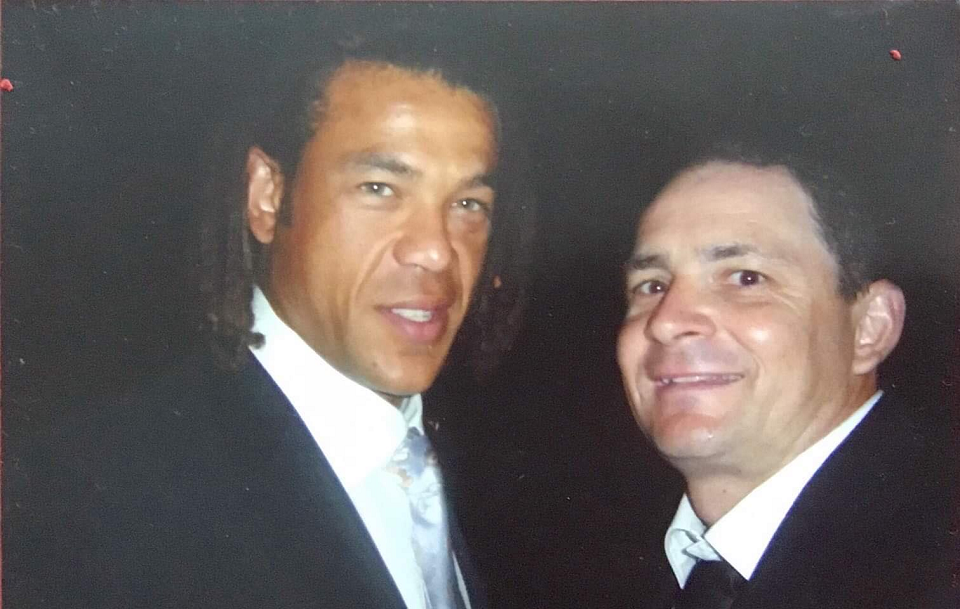
Andrew Symonds and Smiley Toohey
Are you a fan of the pathway systems in cricket? If so, why and if not, why so?
The pathway system in cricket became necessary when sports such as AFL and soccer started doing it. The idea of talent identifying players from an early age and developing them is important, but a lot of it was to keep them away from other sports. This is particularly so in woman’s cricket. The system certainly has considerable benefits in getting players in and giving them the opportunity to extend their training and playing experiences, especially over winter, with some of the best coaches available. But personally as a parent and teacher, I like to see kids playing multiple sports until they are 16, 17 or 18. Sometimes kids are gifted at a range of activities, and it can be difficult to say what they’ll be best at when they are older.
From a cricket perspective though, get the athletes in early and get them thinking cricket. All sports are doing it. The AFL is a beast though and as a sport we cannot compete with it. I’ve sat in meetings for years at School Sport Australia cricket and listened to the other states talk about the players they were losing to footy. We haven’t really experienced that in NSW a lot and when we did, we had another 4 or 5 guys to take that spot. But in the smaller states, they didn’t have that depth. South Australia lost Shannon Hurn to the West Coast Eagles (300 gamer and Premiership captain). He was the best 15 year old cricketer I’ve seen, more dominant than Phillip Hughes was at that age. But how do you compete with 18 teams and the size of those player lists. Shane Warne wanted to play footy for St.Kilda before he became one of the 5 cricketers of the century. The pathway system is producing many players, but Australian cricket only feeds into 6 state teams and 8 BBL teams. CA will tell you they are feeding into all the grade clubs and local cricket regions as well. That is another debate, and it is all about money, but we have a lot of players who could go to that first class level if there were more high development programs following these pathway systems. And the lack of high performance / first class teams has in some cases squeezed out older players to make way for these pathway players at grade and state level.
I’ve always thought 13 years old was a bit young, but I feel the clubs and zones do an incredible job with players at that Under 16 age group level and the majority of clubs and zones have academies in these age groups. I’d have the grade clubs more involved at 13 / 14. We had systems set up in schools at 12’s and 15’s, but the state associations wanted more control over identifying players and how this was happening. My experience in Western Zone Academies was that we produced some very good teams and players. A lot would head to Sydney to play, but we seemed to have a lot who didn’t continue playing after the chance of selections in state teams started to wane. So putting that state badge on them from 13 years can have the effect I feel, that playing for NSW becomes more important (I’m not saying it isn’t), but traditionally cricketers wanted to play for their club, their zone and then the different levels. Today’s players are trained from under 12’s that selections in teams means something to them as cricketers, and without selection it damages their future prospects.
So the pathway system is important, but I feel it needs to be more inclusive to school representative cricket and grade academies. All of these processes have been used over the years to further the experiences of players and build their cricket capacity. Thankfully, as I mentioned earlier, Cricket Australia introduced the Sydney based and Country based state teams to nationals. Increasing more of our players to the end point of the pathway in the age groups. There are many who feel the grade clubs should have more involvement with the player ID and pathways, and I certainly wouldn’t disagree. The new indoor training hubs at grade clubs and across country areas will also have a significant impact on development and training standards.
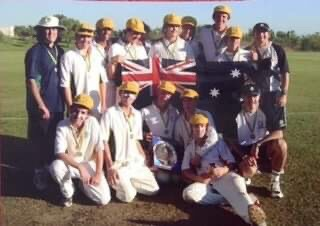
School Sports Australian Under 16s in Darwin 2006
How important is it for state associations to put more energy and investment into regional cricket. What can they do more?
Regional cricket structures are actually built around representative cricket pathways in the country. All the administration goes from cricket councils to zone to country level. They develop and give opportunities for players, coaches and administrators. However, in some eyes it is no longer a talent ID program for recognising players to attend state trials or be picked up by grade clubs in Sydney. It is important because the job of administering cricket is to provide opportunities and experiences to players at all levels. Representative cricket in the country allows you to represent your area against the best players from other areas and challenge your skills. Players want to have these types of opportunities and they are important in keeping players involved at all levels. I feel NSW Country Cricket and CNSW have done a great job in supporting their representative program over the years and have even enhanced opportunities by developing the Regional Big Bash for T20’s and state wide knockouts at different levels for towns of similar size. They need to continue these opportunities, and what a highlight for country players to participate in a finals day on the SCG. Outstanding initiative.
Keeping our top players involved and engaged is important. Players returning to regional communities from grade cricket have a great deal to offer, not just as role models for younger players, but as leaders within the cricket community in their towns. A recent example in my area was James McNeil returning from UNSW to East Albury in 2013/14. James had followed the path of most junior rep stars, heading to Sydney for the opportunity to play at state level. I’d imagine at times he probably challenged for 2nd XI cricket. James came home for work for a couple of years, playing in the local rep teams, making the Victorian Country and then Australian Country teams. His involvement in local cricket further enhanced his club and experiences of his players at the club. James then went back to premier cricket when he moved to Melbourne for work, captaining Melbourne Uni for a number of years.
Representative cricket and zone academies allow younger players to continue developing their skills at home while they become a little bit more mature for independent life in the city. The link with Cricket ACT and NSW Country has also had significant benefits for representative players from Newcastle, Western, Southern and Riverina over the years, providing another premier cricket competition closer to their area. It has been a great transition competition for players like Nathan Lyon (Young) and Henry Hunt (Grenfell), setting them up for the opportunity to move to other states. I would love to see ACT become part of the Sheffield Shield Competition, perhaps even take over a footprint model for the southern end of the state.
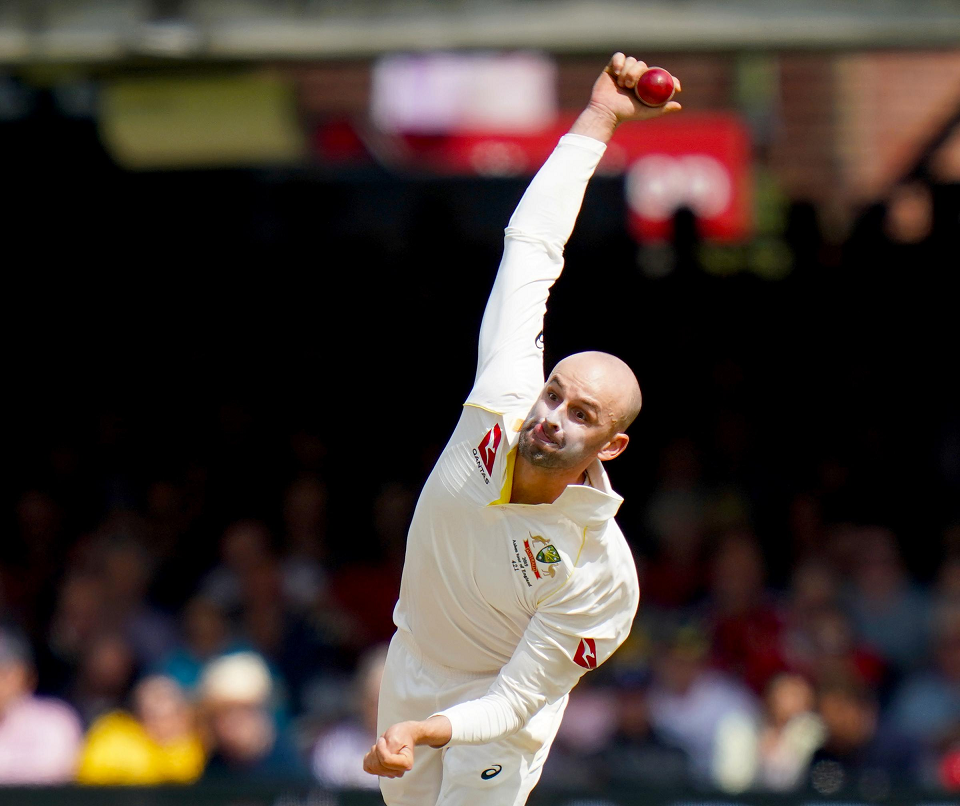
Nathan Lyon
It is important that CNSW continues to invest in their high performance indoor centres that they are building in regional areas. These will ensure players are training in good purpose made cricket facilities. This encourages local councils to also invest in their cricket facilities like nets and turf wickets. While many high schools and primary schools have aging cricket facilities, they are in need of repair and regeneration. Unfortunately, the costs to do this often makes it impossible for schools. This type of infrastructure development also needs to be looked at in the country regions.
Who was your childhood hero?
I can’t name just one. Growing up in the 70’s and 80’s, I loved DK Lillee, Rod Marsh, Greg Chappell and Allan Border. As an Australian cricket fan, these guys were the heart and soul of our team. They have contributed to Australian cricket in a significant way after they retired from playing. I would also add Marie Cornish to the list. She was the first test cricketer I ever met. They were all my heroes, along with Mark Ella (Randwick, NSW, Australian Rugby). Mark was an incredible rugby player.
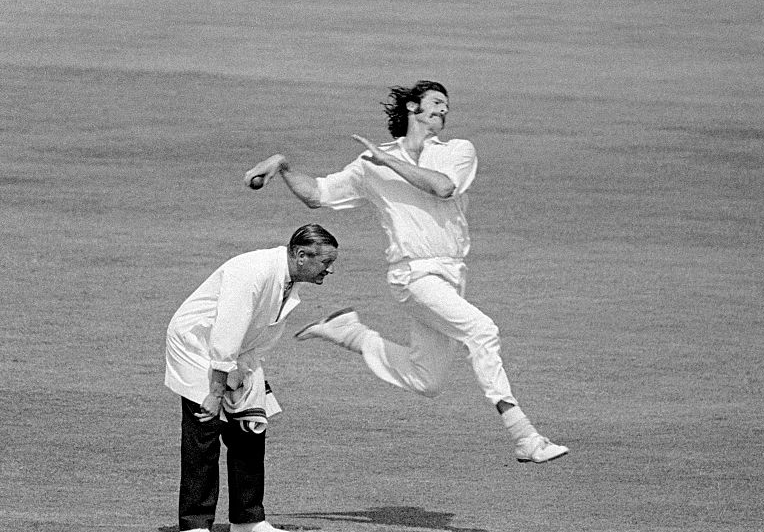
Dennis Lillee
Who are the three sports people in the world you’d most like to meet?
Tom Brady, Roger Federer and Usain Bolt.

Tom Brady
Who’s your favourite cricket commentator?
Adam Gilchrist and Ricky Ponting. I loved the BBL when it first started and when Gilly and Ricky Ponting were working together with Mark Waugh, it was just an incredible team. They actually really explained the game and what was going on. How they read the play was just incredible and the amount of times they called it right was insane. Great personalities and a huge amount to offer to cricket moving forward.
What was your favourite ground to play at?
This might sound strange for people from the city, but Wade Park in Orange was one of the best tracks to play on in the early 90’s. Even the state players would say it was the fastest wicket this side of the WACA. I had some really good spells of bowling on that ground and it hosted night cricket as well. CNSW have just built a high performance training hub there, which will continue to see it used as a cricket field for years to come. It has been named in honour of Carl Sharpe.
What’s been your most memorable moment in cricket?
I must say whenever any player you have had something to do with sees their dream come true, it is pretty memorable. For instance, Chris Tremain making his Australian debut was incredible. A kid from Yeoval, a town of 291 people. When players first play for Australia, CA gives them three signed shirts in a frame with photos to give to cricket clubs and schools, and one for their family. Chris gave his to UNSW and to me. I have it hanging in our study.
From a negative memorable moment, I will never forget the ball that hit Phillip Hughes. It broke my heart. I still struggle with it. I’m not sure how the guys on the field cope with it. But I know Phillip would’ve wanted them to keep playing hard, he would’ve expected nothing else. Phillip loved cricket and everything about it.

Phil Hughes
What’s the best win you’ve been involved with?
As a coach, the team I remember most was the NSW 15’s at the SSA Championship in Canberra in 2014. We were dead and buried against ACT (they have overage players at this championship). In the semis, they lost 7/20 for us to win by 5 runs. And then in the final, WA lost 7/60 in the last 17 overs I think to lose by 2 runs. That team was captained by Param Uppal, and he was at the centre of each of these wins. I said to the team at the 33rd over mark in the final, we always win the last 17 overs, we take this deep and we trust what we have been doing all week. And listen to Param!
As a player it is anytime you win a grand final, it was an incredible moment. I played in 5 premierships with Bathurst Centennials and each one was special.

Who are the three players from your playing days at the top of the list for a Saturday afternoon barbeque?
As you’ve been reading, I’m not brief, and I would struggle to keep this to three. My bucks party had pretty much mates from my cricketing world at it, I’d take anyone that came on that day. We went to the SCG to watch a shield game, it got washed out and we went straight to the Clovelly Hotel. It was an experience!
What are your hobbies?
To be honest, my kids. I’m currently the President of Albury Swim Club. I’ve never been in a swim club in my life, but that is how I spend a lot of free time at the moment. My kids also play water polo and Aussie Rules. I still juggle from time to time, and just recently made it onto the Network 10 program The Cheap Seats for juggling knives and fire for my students during lockdown! It was a bit of fun and it is something I love teaching to others. Other than that, it is jobs round the house DIY style, and exercising when I can. I also love the South Sydney Rabbitohs and watch way too much sport on TV!
What’s the best advice you’ve received?
I have received so much advice in my life it is hard to remember everything. From a cricketing point of view, I remember Stu Webster asking me one day if I was nervous, I said yeh. He said three big breaths before you face the first ball, and remember the only ball that counts is the one coming. I’ve said that a million times to various players. From a life advice perspective, it probably is “The future is a mystery, the past is history, today is a gift, that is why they call it the present!” You have to be in the now to see opportunities and enjoy the moment. And at work – always do more than you are paid for!
What’s your occupation?
I am the Deputy Principal at Albury High School. I have worked for the NSW Department of Education since 1995. I have been the NSW Combined High Schools Cricket convener since 2001, that brings with it some work, but an opportunity to stay closer to cricket.
If you were running a state cricket association what would your 2 priorities to ensure cricket in the state remained strong and successful on and off the field?
I would like to start by backing up Dean Tuckwell. EXPANSION IS KEY. A couple of population examples, Sydney has the same population as New Zealand, which has six first class teams. The ACT is the same population size as Tasmania (without adding in the hinterland around it). Cricket Australia needs to stop looking at the Sheffield Shield and first class cricket as a cost. It is an investment in producing players, coaches, administrators etc for international cricket, and building successful competition structures underneath to produce players. Once CA admits a 7th first class team into the competition (the last was Tasmania - 1977/78), the next step in expansion needs to be an addition of “The Territorians” to the BBL, a team that will represent both the ACT and NT, making the BBL the first fully national competition.
We have the elite pathway system in junior cricket but we need to continue this for players as they get older. Using our traditional federation system is not giving enough players exposure to a full time professional cricket environments. CA initiated a few years ago the talent managers around the states. These positions were there to identify future players who could play at that level and higher and ensure they continued in professional cricket. These players moved around from their home state to other states to ensure they continued in professional cricket. So the talent manager would inform the other talent managers who they were contracting, and who they weren’t, then they went to the business of ensuring states could have the best squads possible. For a state like NSW that meant we were going to lose quality players to other states. We as a state cannot look at this as an issue, as we only have 11 spots per game. When you hear ‘how did they let that guy go’, well it had to occur so that player could continue their career.
We have the talent to fill two first class teams within NSW, it is common sense when you look at our population. If we were NZ, we’d be expected to fill six teams. Providing that professional environment is where we struggle against the powerhouse of the AFL, it has 18 teams, and massive lists. Keeping our players in the game has to be a priority. More professional teams will lead to players continuing their careers longer. The first few seasons of BBL cricket were exciting because they had a lot of retired international players in each of the franchises.
The second step needs to flow throughout our state – from the professional teams to grade and representative cricket. Pick the best team – regardless of their age. As a cricket culture we have followed the belief that when players reached 30 they were not going to improve anymore. I’m pretty sure Greg Chappell said this at one stage, if the player has not been selected to play for Australia before 30, they are wasting their time and taking a spot away from someone else (in saying that Mike Hussey was dropped by WA when he was 29). This was true in the time before professional cricket, as the players were not being paid at a rate that could sustain them in the game. This is now not the case. You actually need experienced cricketers to maintain their involvement in all sectors of our cricket, from professional to park cricket. That is how you build and continue a culture and develop younger players. We have also had the experience of cricketers being chosen well before they have earned their stripes. This has been encouraged by CA, who have KPI’s for player selections and age debut. This has disengaged older players who are seeing themselves miss selection to players who are at that point not at their level. This damages cricket in the long run, especially if the players then stop playing grade cricket. I’ve heard this mentioned so many times, don’t select players on what they’ve done in age group cricket. This means a return to 2nd XI cricket and state colts, a cost which might seem extravagant by CA.
To continue to develop and refine their cricket competitions and opportunities, CA must support cricket being played everywhere. The growth in the woman’s game and the amount of over 50’s now playing cricket is because opportunities have been created for them to follow representative pathways. I personally think Cricket Australia and CNSW have done well with many of their challenges, but there must be recognition made that NSW has different needs and challenges to Tasmania and South Australia for instance, and sometimes I feel over the last twenty years this has not been the case at the higher levels, especially in selections of players and programs that have been implemented.
Join the cricket network to promote your business and expertise. Make it easy for people to search and find the people and services they need through people they know and trust.
Join the network

